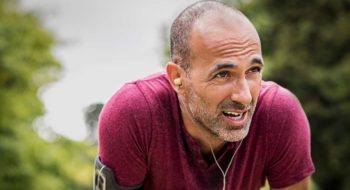Running is great exercise for adults and kids, but it’s important parents pay close attention to how regularly and how far children and teens run to avoid potential damage to their growing bodies.
Overdoing any activity can lead to injuries, from torn muscles and damaged tendons to injured growth plates and hairline fractures – any of which can derail a young person’s ability to pursue their favorite sport.
Some sports, such as baseball and tennis, are known for their risk of causing premature wear-and-tear on young bodies. Other sports, such as long-distance running, tend to do less harm – as long as parents and children stay within reasonable limits, says Dr. William Didelot, a pediatric orthopedic surgeon at Tidelands Health Orthopedics.
“The best way for a child to avoid an overuse injury is to cross-train – switch sports to use different muscles,” Dr. Didelot says.
Overuse concerns
Problems are more likely to arise when young people stay focused on the same sport, using the same muscles and joints over and over without giving them time to rest.
Runners, who rely on the large muscles of the thigh and calf, tend to be less prone to repetitive stress than other athletes because those muscles and associated joints can take more strain, Dr. Didelot says, but it’s important to remember that running long distances is intrinsically a repetitive sport that requires contact with the ground hundreds or thousands of times each session.
“I see a lot of cross-country runners in my practice,” Dr. Didelot says.
Prevention is key
It’s important, Dr. Didelot says, to pay close attention to your child’s shoes to make sure they fit well and are replaced as needed. Flexibility and stretching are also important, as is mixing up running surfaces to avoid pounding on hard pavement each run.
For children and young people, it’s also a good idea to scale distances to the age of the runner. That means younger children should run shorter distances each outing, gradually building up to longer runs as they grow.
Enjoying this story? It’s free to republish. Learn more.
One approach is to double the running distance every three years. A 9-year-old that runs a 5K this year will be ready for a 10K at age 12 and half-marathon at age 15. Children under 9 should stick with short runs of one mile or less, Dr. Didelot says.
If you have any questions or concerns, speak with your child’s primary care provider, who can refer you to a specialist like Dr. Didelot if needed.

Dr. William Didelot
Pediatric Orthopedic Surgeon, Tidelands Health Orthopedics
Call to Schedule
Bio
Dr. William Didelot is a board-certified pediatric orthopedic surgeon who practices at Tidelands Health Orthopedics. He specializes in pediatric orthopedic surgery, as well as the care and treatment of pediatric musculoskeletal conditions, congenital deformities including hip dysplasia and clubfeet, gait abnormalities, pediatric bone and joint infections and other conditions.
Learn MoreMedical Education
Education
Indiana University School of Medicine
Residency
Indiana University
Fellowship
Riley Hospital
Awards
Board Certification:
American Board of Orthopaedic Surgery
Meet the Expert
Dr. William Didelot
Call to Schedule
Dr. William Didelot is a board-certified pediatric orthopedic surgeon who practices at Tidelands Health Orthopedics. He specializes in pediatric orthopedic surgery, as well as the care and treatment of pediatric musculoskeletal conditions, congenital deformities including hip dysplasia and clubfeet, gait abnormalities, pediatric bone and joint infections and other conditions.






